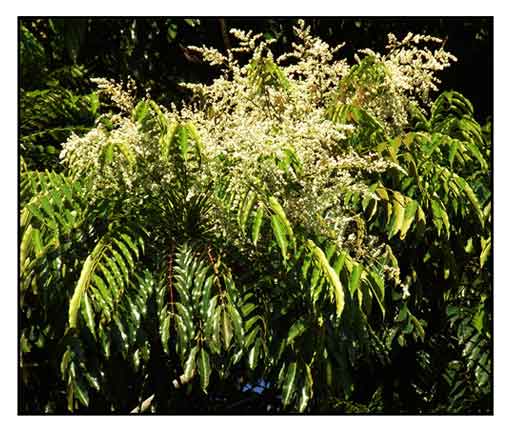
Family • Anacardiaceae
Amugis
Koordersiodendron pinnatum Merr..
BUGIS
| Scientific names | Common names |
| Koordersiodendron pinnatum Merr. | Amugis (Tag.) |
| Dangila (Tag.) | |
| Karogkog (Bik.) | |
| Koordersiodendron pinnatum Merr. is an unresolved name. The Plant List | |
| Kew science / Plants of the World online provides 5 synonyms: Cyrticarpa quinquestilla Blanco, Helicteres pinnata Blanco, Koordersiodendron celebicum Engl., KoordersiodendrON papuanum Kaneh & Hatus, Odina speciosa Blume. (3) | |
| Other vernacular names |
| INDONESIAN: Tabu hitam, Bugis, Kayu bugis, Grepau, Siuri. |
| MALAYSIA: Ranggu. |
October 2020
![]()
 |
| PHOTOS / ILLUSTRATIONS |
| IMAGE SOURCE: Photo / Anacardiaceae: Koordersiodendron pinnatum / Flowering branch / © 2015 Benigno Resurreccion / contact: [email protected]) [ref. DOL104887 / click on image to go to source page / Phytoimages.siu.edu |
| OTHER IMAGE SOURCE: Photo / Anacardiaceae: Koordersiodendron pinnatum / Twig / © 2014 Leon Alberto Sibal / contact: [email protected]) [ref. DOL92613] click on image to go to source page / Phytoimages.siu.edu |
| OTHER IMAGE SOURCE: / Photo / Anacardiaceae: Koordersiodendron pinnatum / Fruits / Leaf / click on image to go to source page / © Fruitipedia |
| OTHER IMAGE SOURCE: Photo / Anacardiaceae: Koordersiodendron pinnatum / Flowering branch / © 2015 Benigno Resurreccion / contact: [email protected]) [ref. DOL104888 / click on image to go to source page / Phytoimages.siu.edu |
Additional
Sources and Suggested Readings |
DOI |
• |
| List of Understudied Philippine Medicinal Plants |
 |


 Constituents
Constituents
